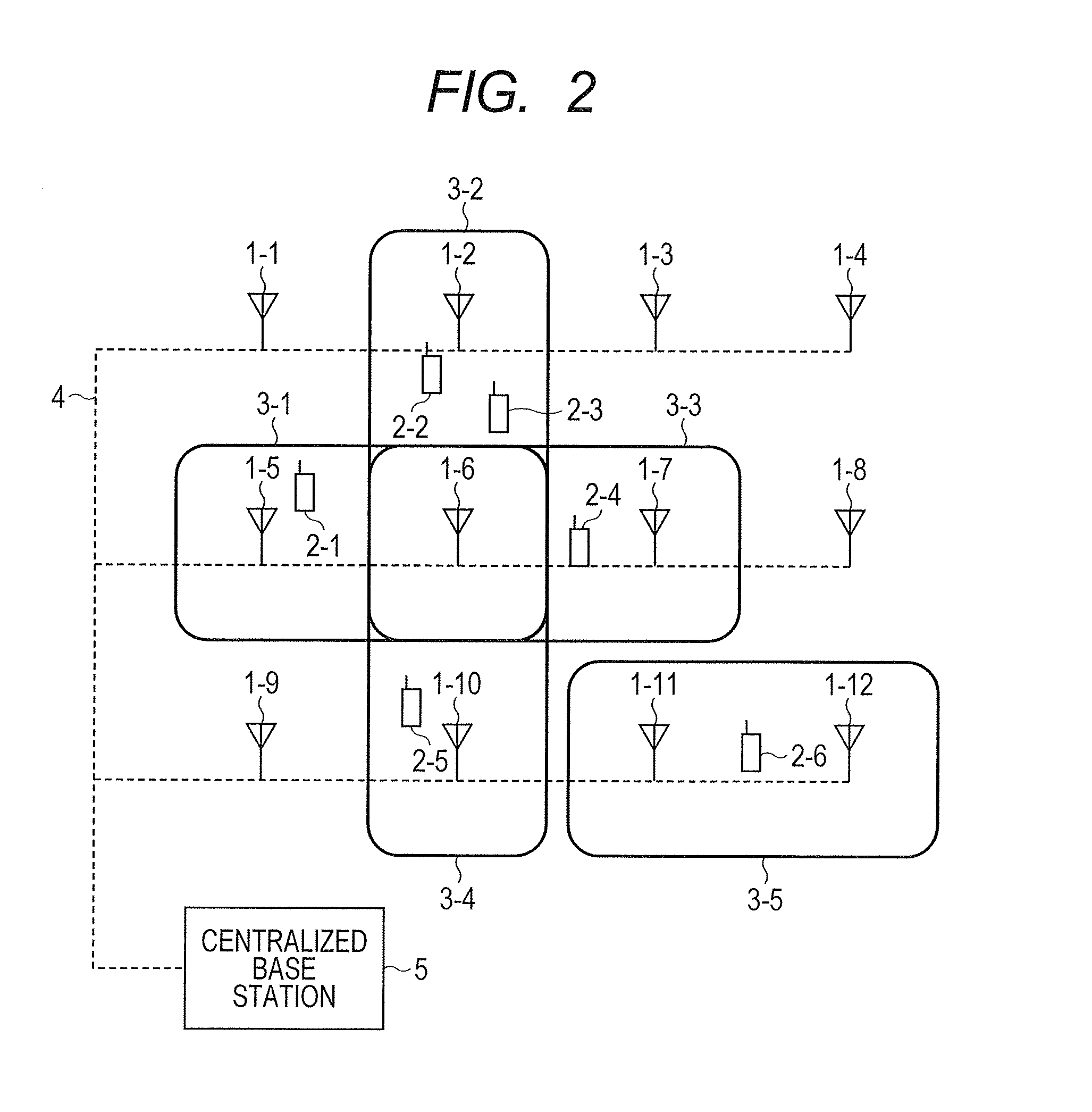Distributed antenna system base station and radio resource control method
- Summary
- Abstract
- Description
- Claims
- Application Information
AI Technical Summary
Benefits of technology
Problems solved by technology
Method used
Image
Examples
Embodiment Construction
[0045]FIG. 2 shows an example of a distributed antenna system having dynamic clusters that select multiple antennas from antennas 1-1 to 1-12 from each mobile terminal in accordance with communication quality.
[0046]Mobile terminals 2-1 to 2-6 establish data communication by using antenna groups having multiple antennas, which are among a large number of antennas 1-1 to 1-12 distributively disposed within the system. Referring to FIG. 2, the mobile terminals 2-1 to 2-6 each use two antennas to establish communication. The antenna groups are referred to as clusters 3-1 to 3-5. Each antenna is connected to a centralized base station 5 through an optical fiber or other wired circuit 4. As regards a downlink, data generated by the centralized base station 5 and addressed to multiple mobile terminals is transmitted from multiple antennas at the same time and at the same frequency (hereinafter referred to as “at the same time and frequency”). As regards an upli...
PUM
 Login to View More
Login to View More Abstract
Description
Claims
Application Information
 Login to View More
Login to View More - R&D
- Intellectual Property
- Life Sciences
- Materials
- Tech Scout
- Unparalleled Data Quality
- Higher Quality Content
- 60% Fewer Hallucinations
Browse by: Latest US Patents, China's latest patents, Technical Efficacy Thesaurus, Application Domain, Technology Topic, Popular Technical Reports.
© 2025 PatSnap. All rights reserved.Legal|Privacy policy|Modern Slavery Act Transparency Statement|Sitemap|About US| Contact US: help@patsnap.com



